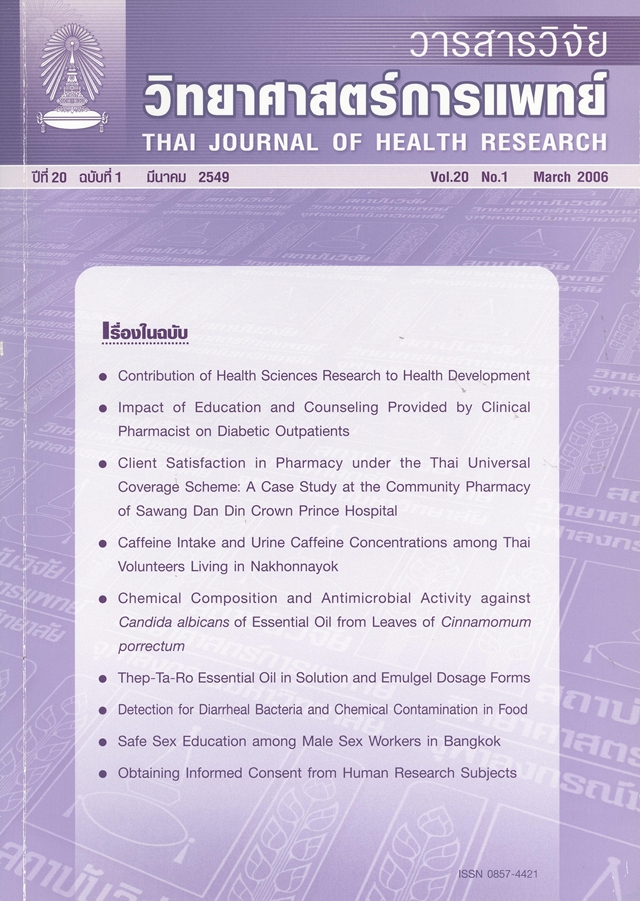Thep-Ta-Ro Essential oil in Solution and Emulgel Dosage Forms
Keywords:
Essential oil, Cinnamomum porrectum Kosterm, Candida albicans, Solutions, EmulgelsAbstract
Cinnamomum porrectum Kosterm (Thep-ta-ro) is nominated as a provincial plant of Phang-nga. Essential oil extracted from Thep-ta-ro leaves has been reported to have antimicrobial activity against Candida albicans. Safrole is a major component in the oil. To make use of the oil for pharmaceutical purposes, it was prepared in solution and emulgel topical dosage forms at various concentrations (1, 2, and 5% w/w). Cosolvents and micellar solubilization were utilized in the formulations. Clear solutions containing the oil in micellar systems with or without cosolvents were prepared. Suitable polymers were added for preparing
emulgel formulations. Oil preparations, 1% and 2% w/w, were tested for activity against Candida albicans, the inhibition zones were 9 and 12 mm, respectively. At 5% w/w Thep-ta-ro oil, the activity is not significantly different from that of Mycostatin® with an inhibition zone of 12-18 mm. Viscosity enhancing agents and surfactants in the preparations have no effect on the activity of the thep-ta-ro oil. Thep-ta-ro oil is likely to be developed for the treatment of topical candidiasis and 5% w/w oil concentration is recommended.






